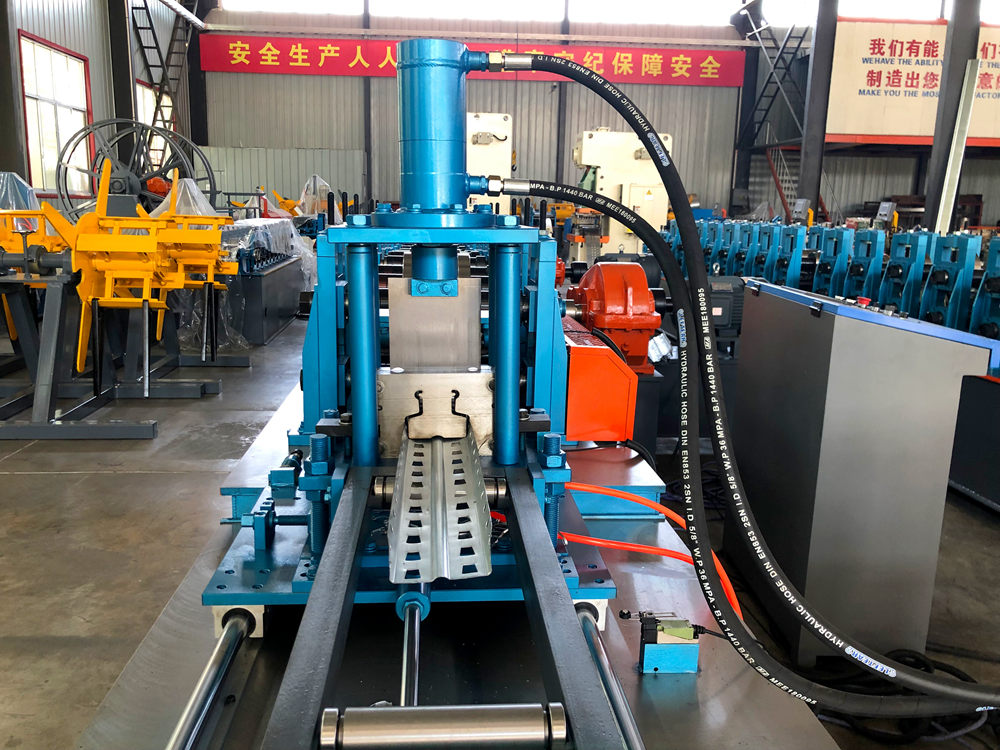
Understanding Sandwich Panel Machines An Overview
In the rapidly evolving construction industry, efficiency, sustainability, and innovation are key drivers of success. Among the notable advancements is the sandwich panel machine, a specialized piece of equipment designed to produce sandwich panels, which are essential materials in modern construction. This article aims to provide a comprehensive overview of sandwich panel machines, their functionality, applications, and the benefits they offer to the construction sector.
What are Sandwich Panels?
Sandwich panels are composite materials formed by two outer layers (usually made of metal, plastic, or concrete) and an insulation core (typically made of expanded polystyrene, polyurethane, or mineral wool). This configuration gives sandwich panels their unique characteristics they are lightweight, strong, and provide excellent thermal insulation. Their versatility and efficiency have made them a popular choice for various applications, including residential buildings, commercial spaces, cold storage facilities, and industrial structures.
The Functionality of Sandwich Panel Machines
Sandwich panel machines are designed to automate the production of these panels, significantly enhancing efficiency and precision. The primary components of a sandwich panel machine include
1. Foaming System This system mixes the raw materials that produce the insulation core. The foaming process is crucial, as it determines the density and thermal properties of the foam.
2. Pre-heating Zone Before the panels are formed, the metal sheets (the outer layers) are often pre-heated to enhance adhesion and ensure a robust bonding process.
3. Forming Station This is where the insulation core is sandwiched between the two outer layers. The machine's rollers help in shaping and pressing the components together, ensuring a tight bond.
4. Cutting System Once the panels are formed, they are cut to the desired lengths using cutting blades or saws. This step is essential for meeting specific project requirements.
5. Stacking and Packaging After cutting, the panels are stacked and packaged for transport, ensuring they arrive at the construction site in perfect condition.
Applications of Sandwich Panel Machines
The versatility of sandwich panel machines allows for diverse applications across various sectors. Some common uses include

- Industrial Buildings Sandwich panels are ideal for factories and warehouses due to their insulation properties, which help regulate temperatures and save on energy costs
.- Cold Storage Facilities The superior thermal insulation of sandwich panels is critical for maintaining low temperatures in the food processing and storage industry.
- Residential and Commercial Buildings Many modern homes and office buildings utilize sandwich panels for walls and roofs, combining aesthetic appeal with energy efficiency.
- Mobile Structures Portable offices, kiosks, and other modular constructions benefit from the lightweight nature of sandwich panels, making them easy to transport and assemble.
Benefits of Sandwich Panel Machines
Investing in sandwich panel machines offers numerous advantages to manufacturers and builders
1. Increased Production Efficiency By automating the production process, sandwich panel machines can significantly increase output while reducing labor costs.
2. Consistent Quality Automated processes ensure uniformity in panel production, minimizing variations and defects that may arise from manual handling.
3. Customization Many sandwich panel machines offer versatility in terms of size, thickness, and insulation materials, allowing manufacturers to tailor products to specific client needs.
4. Sustainability The use of energy-efficient processes and recyclable materials in producing sandwich panels contributes to sustainable construction practices.
5. Cost-Effectiveness The efficiency of sandwich panel production translates to lower overall costs for both manufacturers and end-users, making them a financially sustainable option in construction.
Conclusion
As the demand for efficient and sustainable construction materials grows, sandwich panel machines have emerged as invaluable assets within the industry. Their capacity to produce high-quality, cost-effective sandwich panels aligns perfectly with the needs of modern construction, fostering innovation and pushing the boundaries of what is possible in building design. With continuous advancements in technology and materials, sandwich panel machines are poised to play an increasingly critical role in shaping the future of construction.